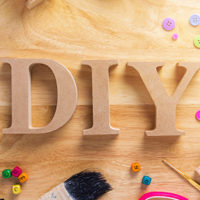At your own risk: The pitfalls of DIY estate planning

There’s no law that says you can’t prepare your own estate plan. And with an abundance of online services that automate the creation of wills and other documents, it’s easy to do. But unless your estate is small and your plan is exceedingly simple, the pitfalls of do-it-yourself (DIY) estate planning can be many.
Dotting the i’s and crossing the t’s
A common mistake people make with DIY estate planning is to neglect the formalities associated with the execution of wills and other documents. Rules vary from state to state regarding the number and type of witnesses who must attest to a will and what, specifically, they must attest to.
Also, states have different rules about interested parties (that is, beneficiaries) serving as witnesses to a will or trust. In many states, interested parties are ineligible to serve as witnesses. In others, an interested-party witness triggers an increase in the required number of witnesses (from two to three, for example).
Keeping abreast of tax law changes
Legislative developments during the last several years demonstrate how changes in the tax laws from one year to the next can have a dramatic impact on your estate planning strategies. DIY service providers don’t offer legal or tax advice — and provide lengthy disclaimers to prove it. Thus, they cannot be expected to warn users that tax law changes may adversely affect their plans.
Consider this example: A decade ago, in 2008, George used an online service to generate estate planning documents. At the time, his estate was worth $4 million and the federal estate tax exemption was $2 million.
George’s plan provided for the creation of a trust for the benefit of his children, funded with the maximum amount that could be transferred free of federal estate tax, with the remainder going to his wife, Ann. If George died in 2008, for example, $2 million would have gone into the trust and the remaining $2 million would have gone to Ann.
Suppose, however, that George dies in 2018, when the federal estate tax exemption has increased to $11.18 million and his estate has grown to $10 million. Under the terms of his plan, the entire $10 million — all of which can be transferred free of federal estate tax — will pass to the trust, leaving nothing for Ann.
While even a qualified professional couldn’t have predicted in 2008 what the estate tax exemption would be at George’s death, he or she could have structured a plan that would provide the flexibility needed to respond to tax law changes.
Don’t try this at home
These are just a few examples of the many pitfalls associated with DIY estate planning. To help ensure that you achieve your estate planning objectives, contact us to review your existing plan.
© 2018
